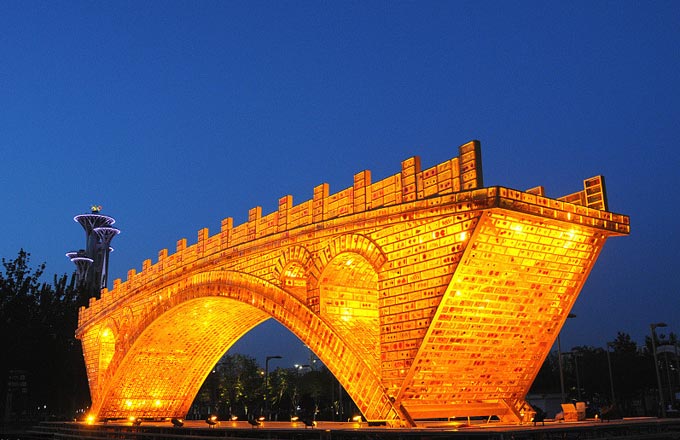

|
Cargo throughput in Zhengzhou airport surpassed 151,000 tons last year. The figure is expected to reach 3 million tons by 2025. |
When it served as the capital of the Xia Dynasty (2100 BC-1600 BC) - China's first empire - Zhengzhou was the political and cultural center of the nation.
Though its role has changed over the last four millennia, the capital of Henan province, now a transportation hub, remains just as vital to the country as ever.
Zhengzhou plays a greater part in connecting railways across the nation than any other Chinese city.
The country's two leading railroads converge in the city, making the Zhengzhou transfer station the largest in Asia. The two lines are the north-south line linking Beijing and Guangzhou and the east-west line connecting Lianyungang in coastal Jiangsu and Lanzhou in inland Gansu province.
Two newly built high-speed railways also connect to the city - one linking Beijing and Guangzhou and another from Zhengzhou to Xi'an. These lines enable passengers to reach China's major cities at a speed of about 300 kilometers per hour.
It is also one of the highway hubs in the country. It sits on the crossroads of two of China's busiest expressways - one from Beijing to Hong Kong and the other from Lianyungang to the border city of Khorgas in Xinjiang. In addition, it is intersected by a number of highways linking many other parts of the country.
The Zhengzhou Xinzheng International Airport has expanded rapidly in recent years.
In 2012, passenger throughput in the airport increased 15 percent from a year earlier to 11.7 million. Cargo throughput grew 47 percent to 151,200 tons, which was the fastest growth among major domestic airports.
In addition to its superiority in transport, which brings more business from the outside, the city also has a huge market because of its strategic location in Henan, the most populous province in China, with more than 100 million people.
To meet the growing demands of investors, a number of development zones, including the Xinzheng Free Trade Zone and Zhengdong New Area, have been built in Zhengzhou.
The city has formed a modern industrial system covering such sectors as automobile, advanced equipment manufacturing, electronic information, food, and textiles and garments.
Many renowned companies have established branches or headquarters in the city, such as Foxconn, Gree Electric Appliances, Dongfeng Nissan, Yutong Group, and Sanquan Foods.
There are 11 companies each with annual sales revenue of more than 10 billion yuan based in the city, including one with revenue in excess of 100 billion yuan. Four companies have been listed among the top 500 in China.
In addition, 84 of the Fortune Global 500 companies have operations in the city.
Zhengzhou is playing a bigger role in central China.
Its GDP reached 554.7 billion yuan in 2012, up 12 percent from the previous year. Fixed-asset investment increased by 22.1 percent to 356.1 billion yuan last year.
With rapid economic growth, income of local residents is also on the rise. Per capita income of rural residents increased by 13.4 percent to 12,531 yuan last year and that of urban residents grew by 12.2 percent to 24,246 yuan. Rising incomes have driven up demand, with spending on consumer goods reaching 228.9 billion yuan in 2012.
In addition to booming manufacturing industries, tourism is also an engine for local economic growth.
One of the eight ancient capitals of China, Zhengzhou has a rich historical and cultural legacy.
The city is proud to have more than 10,000 sites of historical interest, of which 38 marked for national protection.
zhuanti@chinadaily.com.cn
(China Daily 05/18/2013 page6)













